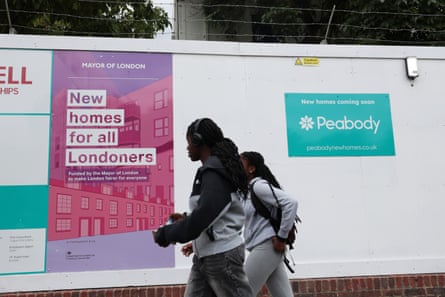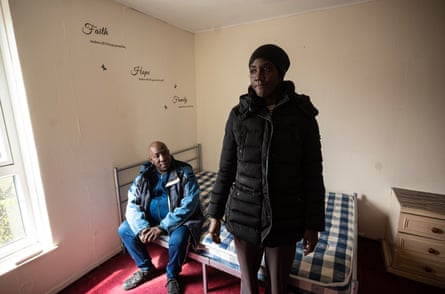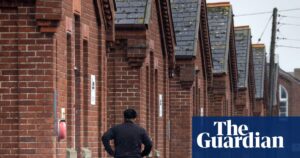Protesters staged a sit-in at a brutalist 1960s estate featured in Stanley Kubrick’s dystopic film, A Clockwork Orange, to highlight concerns about a development they say amounts to gentrification and art washing.
The brief occupation on Saturday of the Lakeside Centre in Thamesmead, an arts centre in south-east London, is part of a wider battle by longstanding residents, who claim that the soul of the community, along with many socially rented homes, will be lost as part of a huge regeneration by the housing association Peabody.
Thamesmead was conceived by a group of architects at the former Greater London Council in the 1960s and hailed as “the town of tomorrow”, providing alternative housing to replace dilapidated inner-city homes in London.
Lesnes, one of the estates built in the area in the 1960s, was famously depicted in A Clockwork Orange.
Sixty years on, improvements are urgently needed and Bexley, like other councils, does not have the cash to do this.
Peabody took over the regeneration of the area in 2014 and in October 2022 the planning committee at Bexley council granted approval for the redevelopment plans. In June, Sadiq Khan, the mayor of London, confirmed the Greater London Authority was content for the local planning authority to make a decision on the plans. The application has been referred to the secretary of state and a response is awaited.
While a minority of regenerated homes will still be available for a social rent, others will be on offer at higher “affordable” rents, which many say are financially out of reach. Some properties will be available for sale. The arrival of the Elizabeth line to Abbey Wood in 2022 has made travel into central London much speedier, making the area a more attractive location for City workers to live.
But longstanding residents of the area, nicknamed Little Lagos owing to it containing one of the UK’s largest communities of Nigerian heritage, say working-class people are being priced out.
One Thamesmead resident who took part in Saturday’s protest, Esther Ovba, said: “I’m Nigerian and my estate is being gentrified. It feels like putting a Band-Aid on a bullet wound. People like me don’t believe our voices are being heard. Some members of the community are being moved to other areas like Rochester and Gillingham and more white, middle-class people are moving in. To me it feels like ethnic cleansing.”
The charity Bow Arts runs the centre in partnership with Peabody. Seven residents who occupied it on Saturday afternoon, dropped a banner from a first-storey walkway that said: “Reclaim Bow Arts”.
They argue that the centre is not providing enough activities for local people. More than 40 artists are living and working in the space as property guardians, but residents claim many are not local people.
A spokesperson for Bow Arts said: “The properties that Bow Arts takes up are offered to the London borough of Bexley first, and only properties that they turn down are then offered over to Bow Arts for the artist guardian scheme.”
Andrea Gilbert, a resident who took part in the arts centre protest, said: “Art washing makes developers look creative and friendly. It hides displacement behind murals and exhibitions. We want to see this arts centre brought back into public ownership.”
A Bexley council spokesperson said: “The council acknowledges the depth of feeling expressed by longstanding residents. While the regeneration programme is being delivered by Peabody and is not directly managed by the council, we remain committed to supporting residents and ensuring that their voices are heard throughout this process.”
Peabody’s executive director for sustainable places, John Lewis, said: “Since 2014, we’ve invested millions of pounds in community buildings, outdoor spaces, culture and communities in Thamesmead.
“We’re bringing derelict community spaces back to life alongside building much-needed homes – and have created six new community or cultural spaces since 2018.
“Keeping the community together is really important to us. We’re offering all residents on the Lesnes estate new homes.
“People living in a social rented home will continue to pay social rent in a brand-new home. Resident homeowners have the chance to buy a 1960s home like theirs on the neighbouring estate, or they can move into one of the new homes over the road, or we have offered to provide an additional 35% in equity or deposit to help them buy any other home locally.”










